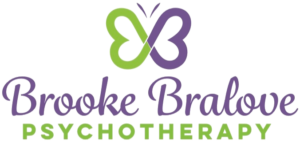How does ART work
In the ever-evolving landscape of mental health treatments, one promising approach that has gained traction in recent years is Accelerated Resolution Therapy (ART). This innovative therapy is making waves for its unique methods and effectiveness in addressing various mental health issues. In this article, we will delve into the mechanics of Accelerated Resolution Therapy, shedding light on how it works and its potential benefits.
The Basis of Accelerated Resolution Therapy
Accelerated Resolution Therapy is a relatively new psychotherapy technique that aims to quickly alleviate symptoms associated with trauma and other mental health conditions. Developed by Laney Rosenzweig, a licensed marriage and family therapist, ART integrates elements of traditional psychotherapy, cognitive-behavioral therapy, and eye movement techniques to create a holistic and efficient therapeutic experience.
Eye Movement Integration
 One of the distinctive features of Accelerated Resolution Therapy is the integration of eye movements into the therapeutic process. This technique draws inspiration from Eye movement desensitization and reprocessing (EMDR) but takes a more streamlined approach. During an ART session, the therapist guides the client through a series of horizontal eye movements while the individual recalls distressing memories or experiences.
One of the distinctive features of Accelerated Resolution Therapy is the integration of eye movements into the therapeutic process. This technique draws inspiration from Eye movement desensitization and reprocessing (EMDR) but takes a more streamlined approach. During an ART session, the therapist guides the client through a series of horizontal eye movements while the individual recalls distressing memories or experiences.
The underlying principle is that these guided eye movements help the brain reprocess information more effectively, allowing individuals to resolve traumatic memories and associated negative emotions. This process is thought to mimic the rapid eye movement (REM) stage of sleep, facilitating the brain’s natural healing mechanisms.
Visualizing Change
In addition to the eye movement component, ART employs visualization techniques to help individuals create positive and empowering mental images. This involves guiding clients to replace distressing images with positive ones, essentially rewiring their perception of past events. By focusing on positive imagery, individuals can gradually shift their emotional response to traumatic memories.
Rapid Resolution of Trauma
One of the key strengths of Accelerated Resolution Therapy is its ability to bring about rapid resolution of trauma. Traditional therapeutic approaches may take weeks or even months to address the effects of trauma, but ART aims to expedite this process. The integration of eye movements and visualization techniques is believed to accelerate the reprocessing of traumatic memories, allowing individuals to experience relief in a shorter timeframe.
Reducing Emotional Distress
 Accelerated Resolution Therapy has demonstrated efficacy in reducing emotional distress associated with various mental health conditions, including post-traumatic stress disorder (PTSD), anxiety, and depression. By targeting the root causes of distressing emotions and facilitating their reprocessing, ART empowers individuals to regain control over their emotional well-being.
Accelerated Resolution Therapy has demonstrated efficacy in reducing emotional distress associated with various mental health conditions, including post-traumatic stress disorder (PTSD), anxiety, and depression. By targeting the root causes of distressing emotions and facilitating their reprocessing, ART empowers individuals to regain control over their emotional well-being.
Client Empowerment
A fundamental aspect of ART is empowering clients to actively participate in their healing journey. Unlike traditional therapeutic approaches, where the therapist takes a more directive role, ART encourages clients to take an active role in the process. This collaborative approach fosters a sense of agency and self-efficacy, contributing to the overall effectiveness of the therapy.
Accelerated Resolution Therapy stands out as a promising and innovative approach. By combining elements of traditional psychotherapy with unique techniques such as guided eye movements and visualization, ART aims to provide individuals with a rapid and effective means of resolving trauma and alleviating associated mental health symptoms.
While further research is needed to fully understand the mechanisms at play, the growing body of evidence suggests that Accelerated Resolution Therapy holds great potential to revolutionize the way we approach and treat various mental health conditions. As we continue to explore and refine this therapeutic modality, it offers hope for those seeking a faster and more empowering path to healing.
If you are in the midst of a battle with trauma and ART seems to be a good fit for you, reach out to learn more about ART therapy. There is a brighter future on the other side of your struggle!


